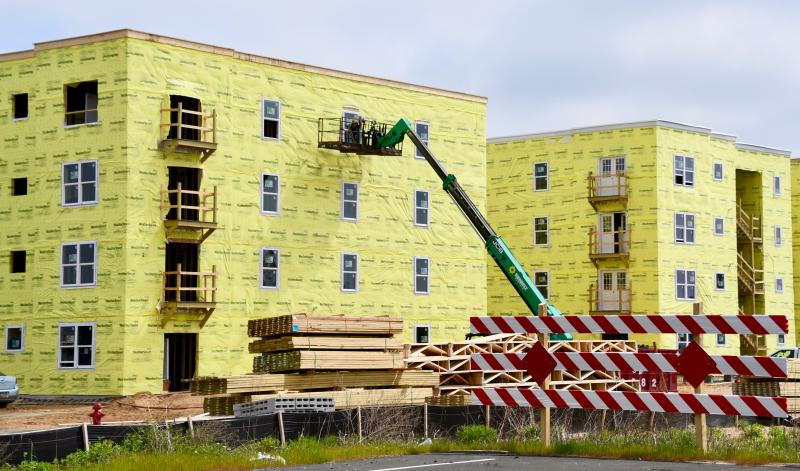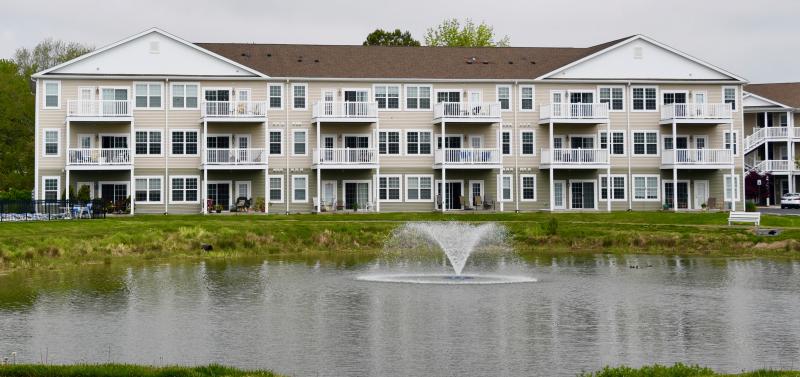Sussex P&Z debates Sussex rental program

Sussex County Planning & Zoning Commission Chair Bob Wheatley often says, “The devil is in the details.”
That's the current process the commission is undertaking as it debates an ordinance to amend the Sussex County Rental Unit Program. At its April 28 meeting, the discussion about those details was spirited at times. And the commission agreed that several details should be changed to remove any possible obstacles for developers taking part in the program.
The program has been place since 2008, but only one project, Coastal Tide apartments near Lewes, has taken part in it.
Assistant county attorney Vince Robertson said following a detailed analysis and subsequent report of housing issues in the county conducted by consultant LSA in 2019, county staff had more data to use to improve the ordinance.
The commission voted to keep the record open for written comments until Thursday, May 12. Sussex County Council will have a public hearing on the ordinance during its Tuesday, June 28 meeting.
County facing crisis
The word crisis was used several times during the discussion about the lack of affordable housing in the county, and in particular, on the eastern side of Sussex.
Commissioner Keller Hopkins said addressing this need is the one of the highest priorities in the county. “We need to enter into this with all hands on deck. I really want this to work,” he said.
But, he said, he was told by a developer who does provide affordable housing that he wouldn't touch the program with a 10-foot pole.
“Doesn't it bother you that no developers helped write the ordinance?” he asked. “I'd like to see developers we respect jump on this, because we need to jump on this now.”
Wheatley agreed developer input was important. “We need buy-in from the people who do this,” he said. “Let's make sure a draft ordinance is sent to everyone on this list [included in the LSA report]. We need to make sure they know about it.”
He said developers would have a chance to review the ordinance and possibly provide written comments or testify during the upcoming county council hearing.
“The problem is a tsunami,” Hopkins said. “The consultant's report shows that half of the workforce can't afford a $250,000 house.”
He said, according to the report, 401 affordable units are needed every year to meet the demand. He added that number does not even include the 10,700 households that are cost-burdened and spending one-half of their income on housing.
Remove all obstacles
The commission agreed there are three issues with the draft ordinance: A requirement for a DART bus route within one-half mile of the project before it can be approved, and requirements for 50 percent open space and 100-foot perimeter buffers.
“I think we should reconsider these requirements that will become limiting factors in the ordinance,” Wheatley said.
The commission agreed more workable numbers would be a 50-foot buffer and 30 percent open space.
In addition, Wheatley said, the inclusion of proximity to a DART bus route as a mandatory requirement before a final site can be approved could be a limiting factor.
He said it might be better to allow projects to proceed with a written agreement from DART that bus service would be available when apartments are ready for rent.
Wheatley also said the requirement for central water and sewer service may not be necessary for small projects on smaller lots. In addition, he said, the availability of central water and sewer in western Sussex County is extremely limited.
What's in the ordinance
At least 30 percent of the units must be set aside as affordable units as defined by the ordinance; density at 12 units per acre; open space of 50 percent; 100-foot perimeter buffers; connection to central water and sewer service; within one-half mile of a DART bus stop; building height limit of 52 feet, which is 10 feet higher than what is allowed today; interconnectivity to any adjacent commercially zoned properties; sidewalks on all streets with connectivity to surrounding sidewalks; walking and biking trails must be interconnected and are permitted with the buffer area.
But as commissioners and those who testified pointed out, the overriding factor in the ordinance is the provision that up to 12 units per acre is considered a by-right permitted use in all residential districts within the coastal, town center and developing areas. Public hearings before the commission and county council would not be required. Developers would only have to submit site plans for the commission's review.
The affordable units would be available to qualified renters whose annual income is 80 percent or less of the county's average median income.
Brandy Nauman, director of the county's Department of Community Development and Housing, said for a two-person family, the income level would range from $18,000 to $48,000. Monthly rents for units in the program in the Coastal Tide apartments, she said, would be $590 for one-bedroom units, $705 for two-bedroom units and $815 for three-bedroom units.
Hudson: Move faster
“Affordable housing is a massive crisis in the county,” said local developer Christian Hudson of Lewes.
“This is too little and too late as a Band-Aid over a big, gaping wound. The crisis is so much more acute than it was in 2019. This is going in the right direction, but we need to move much faster.”
Hudson said by limiting the program to growth areas, a large section of the county is cut out.
He agreed that the by-right provision in the ordinance was a major incentive.
Hudson said many residents are facing a toxic mix of increasing housing costs and stagnant income.
He also referenced the LSA report. He pointed out that consultants said current zoning restrictions create limitations on multifamily projects. “That's why all the projects look the same. Those limitations cause higher costs and encourage sprawl,” he said, adding developers cannot build 12 units to an acre because of current regulations.
Wheatley said this program will not solve the affordable housing problem in the county. “But we need to do this and go on to the next thing, and do it soon,” he said.
Sussex County Habitat for Humanity Executive Director Kevin Gilmore said he is supportive of the ordinance.
“In 18 years, I've never seen a level of conversation like this about affordable housing. This is a huge step forward with the by-right and high density in the ordinance,” he said.
See the ordinance at sussexcountyde.gov/sites/default/files/packets/Ord%2022-01%20Affordable%20Housing%20Ordinance%203.25.22.pdf























































